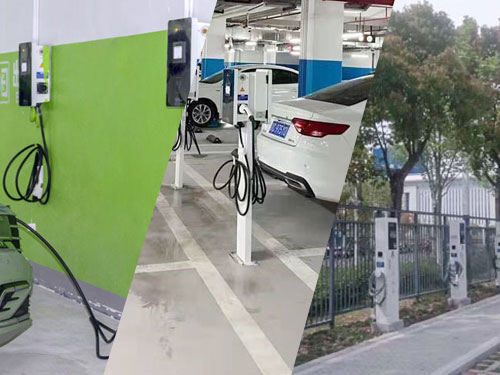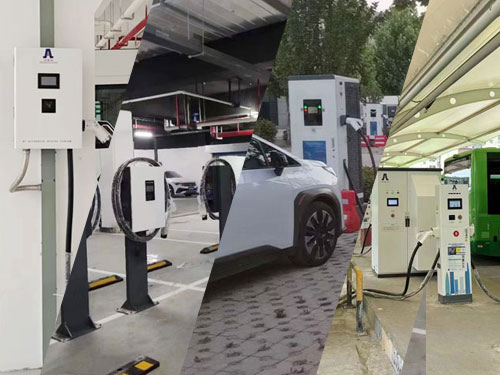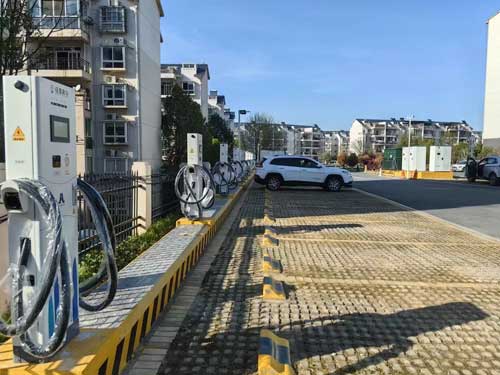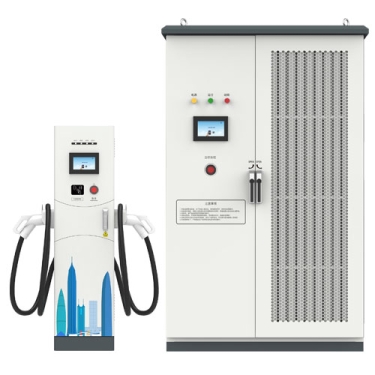- Visitors:0 Views
- Time:2024-07-09
ev charging level 1 2 3
Ev charging levels are usually divided into Level 1, Level 2, and Level 3, each of which differs in charging speed, usage scenarios, and charging methods. The following is a detailed explanation of these three charging levels:
Level 1 charging (slow charging)

Features:
Charging speed: The slowest, which can add about 3 to 5 miles of range per hour, and a full charge may take more than ten hours or even longer.
Usage scenario: Suitable for daily short-distance commuting, and users who drive no more than 50 miles a day.
Charging method: Using a common 120V or 220V household socket, electric vehicles charge the battery by converting AC power to DC power through an on-board charger.
Advantages: The charging process is gentle, with little damage to the battery and extended battery life; the charging cost is low and the burden on the power grid is small.
Disadvantages: The charging time is long, which is not suitable for long-distance travel or urgent charging.
Level 2 charging (fast charging)

Features:
Charging speed: Much faster than Level 1 charging, depending on the power of the charger and the maximum charging rate of the vehicle, 12 to 80 miles of range can be added per hour.
Usage scenario: Suitable for daily long-distance commuting or users who need fast charging.
Charging method: Use 240V or 380V power supply, usually requires professional electrician installation, can be installed at home, workplace and public places.
Advantages: Fast charging speed, can replenish a large amount of power for the vehicle in a short time.
Disadvantages: High installation cost, requires professional electrician to install; frequent use of fast charging may accelerate battery aging.
Level 3 charging (supercharge/DC fast charging)

Features:
Charging speed: Fastest, can charge the battery from low power to about 80% in less than an hour, or even shorter.
Usage scenario: Very suitable for long-distance travel or urgent charging occasions.
Charging method: Use direct current (DC) to charge the battery directly without conversion by the on-board charger.
Advantages: Extremely fast charging speed, greatly shortening the charging time.
Disadvantages: High charging power, higher requirements for batteries and power grids; high construction and maintenance costs; usually can only be used at public charging stations and cannot be installed at home.
Summary
The charging level of electric vehicles varies according to the charging speed, usage scenario and charging method. Level 1 charging is suitable for daily short-distance commuting and long-term parking charging; Level 2 charging is suitable for long-distance commuting and users who need fast charging; Level 3 charging is the best choice for long-distance travel and urgent charging. Users can choose the appropriate charging method according to their actual needs and vehicle usage scenarios. At the same time, with the continuous development of electric vehicle technology and the improvement of charging infrastructure, the charging experience of electric vehicles in the future will be more convenient and efficient.
If you want to know more about "ev Charging Level 1 2 3", you can consult us online or email (sales@hjlcharger.com).
Recommended Reading
- 2024 Mid-Autumn Festival Holiday Notice2024-09-14
2024 Mid-Autumn Festival Holiday NoticeThe bright ...
- Green journey, innovative leadership: Hongjiali EV...2025-04-10
On March 27, the three-day 2025 American New Energ...
- New Energy Industry Encyclopedia - Virtual Power P...2024-07-09
What is a virtual power plant?A virtual power plan...
- ev charger cost2023-10-26
EV charger cost range from $20
- ev charger manufacturers in thailand2024-06-04
Thailand Electric Vehicle Char
- ev charging china2023-12-13
Shenzhen Hongjiali New Energy
- How fast is a 22kW EV charger?2024-12-13
How fast is a 22kW EV charger?
- ev charger types2023-12-27
There are generally three type
- electric vehicle charging guide2024-11-11
Electric vehicle charging is a
Hot Products
-
split single/double gun 4...
ParametersRequirementsGeneral Requiremen
Get last price
-
rapid charging station
Rapid charging station can be deployed i
Get last price
-
ev quick charger
Designed with cutting-edge technology an
Get last price
-
AC level 2 EV charging pr...
AC level 2 EV charging products that meet the standards in N...
Get last price



